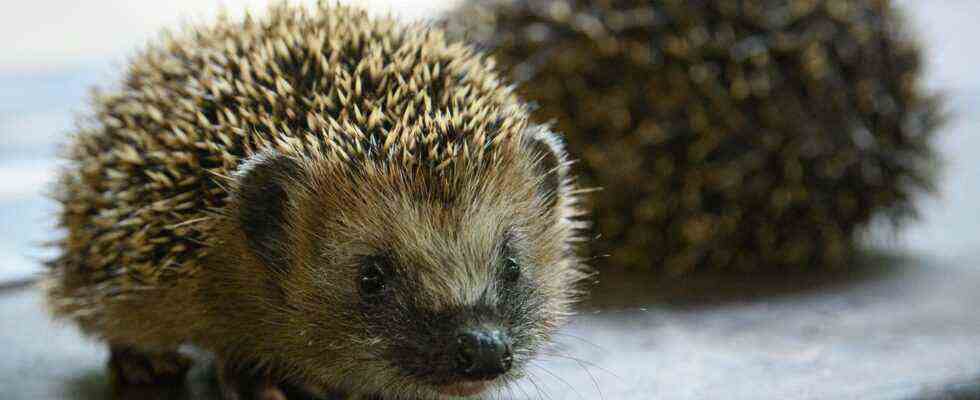Research on antibiotic resistance
Dangerous pathogens – why it is better not to touch hedgehogs
Researchers have gained new knowledge about MRSA bacteria through hedgehogs.
© Soeren Stache / Picture Alliance
In hospitals, MRSA bacteria are feared because of their resistance to antibiotics. When the medication doesn’t help anymore, that’s a big problem. Until now, it was thought that the bacteria emerged after the introduction of antibiotics. A study with hedgehogs now brings new knowledge.
This story is so interesting because: “Who doesn’t love hedgehogs?” Says Lance Price. He is the director of the Antibiotic Resistance Action Center at George Washington University. The “New York Times” spoke to the scientist about a publication in the journal “Nature”. It’s about hedgehogs. Not just about how cute they are, but about how MRSA bacteria develop.
MRSA is the abbreviation for methicillin-resistant Staphylococcus aureus. In humans, the bacteria generally live in the nasal mucous membrane and also on the skin and are usually harmless there. However, if they get inside the body through wounds, for example, they can be dangerous, not only for old and weakened people. Such infections are treated with antibiotics. Substances from the group of beta-lactams play an important role. However, resistant bacteria such as MRSA are insensitive to almost all beta-lactams. In Europe alone there are around 171,000 MRSA infections per year, writes the team around Jesper Larsen from the Statens Serum Institute in Copenhagen, which is behind the study with the hedgehogs.
Larsen and a group of international researchers have jointly examined hundreds of run-over hedgehogs from Denmark and other European countries as well as New Zealand. They found that MRSA bacteria live on the majority of hedgehogs’ skin. Especially the hedgehogs from Central and Western Europe often carried MRSA, in England and Wales around two thirds of the animals. All affected hedgehogs carried MRSA variants with the mecC gene. These contain the blueprint for an enzyme that makes the bacteria resistant to most beta-lactam antibiotics.
MRSA variants have been around in hedgehogs since the 19th century
The research team assumes that the resistance in hedgehogs arose as a reaction to a skin fungus that is common in the animals. The resistance helps the bacterium Staphylococcus aureus to assert itself against the fungus on the hedgehog’s skin. The researchers assume that a variant of MRSA has probably been circulating in hedgehogs since the early 19th century. “We believe that MRSA developed on the skin of hedgehogs in a struggle for survival and later spread to livestock and humans through direct contact,” said co-author Ewan Harrison of Cambridge University in a statement from the university.
The emergence of resistance is therefore not a modern phenomenon that is exclusively related to the use of antibiotics in human and veterinary medicine. In fact, some mecC-MRSA infections in humans are either due to other intermediate hosts or to direct contact with hedgehogs. Antibiotic-resistant bacteria therefore emerged long before antibiotics were used.
So far, experts have assumed that resistant S. aureus strains arose from the widespread use of antibiotics in medicine. The germ developed resistance to the very first antibiotic, penicillin introduced around 1940. MRSA was first identified in 1960, shortly after the introduction of the antibiotic methicillin in 1959. Since then, numerous MRSA variants have been detected worldwide – both in humans and in animals, especially farm animals such as pigs and cows, which are often treated with antibiotics . Antibiotic resistance is identified in the study as one of the greatest threats to health worldwide.
The authors emphasize that it is important to carefully monitor the development of resistance. The role of natural selection in wild animals as well as the influence of agriculture and medicine have to be taken into account. The results of the study would in no way diminish the urgency to curb the use of antimicrobial drugs, Jesper Larsen told the New York Times. “When we overuse antibiotics, we accelerate what is already happening in nature.” About our relationship with hedgehogs, he said: Even if direct transmission from hedgehogs is unlikely, it is always wise to keep a healthy distance from the animals.
Source: “New York Times”, “Nature”

